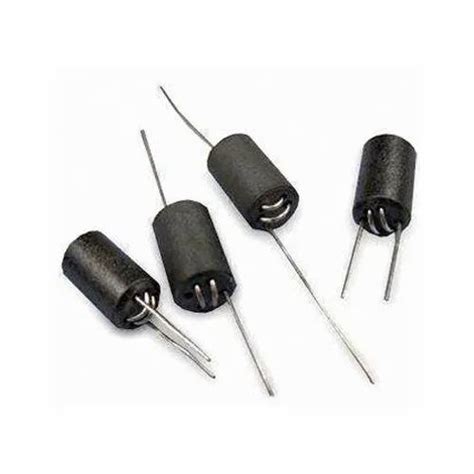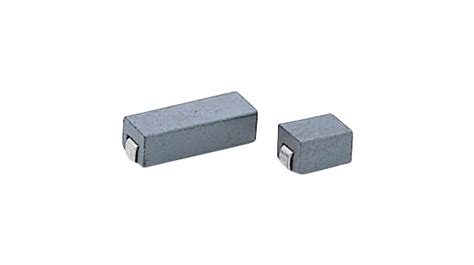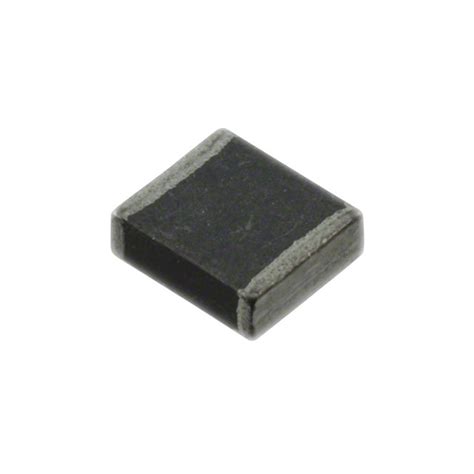What are Ferrite Beads?
Ferrite beads, also known as EMI suppressors or RF chokes, are passive electronic components made of a magnetic ceramic material called ferrite. They are designed to attenuate high-frequency noise in electronic circuits without affecting the desired low-frequency signals. Ferrite beads are commonly used in various applications, such as:
- Power supply lines
- Data cables
- Audio and video systems
- Automotive electronics
- Industrial control systems
- Medical devices
How Do Ferrite Beads Work?
To understand how ferrite beads work, let’s first explore their physical properties and the principles behind their noise suppression capabilities.
Ferrite Material Properties
Ferrite is a ceramic compound made of iron oxide (Fe2O3) combined with other metal oxides, such as manganese, zinc, or nickel. This material exhibits high magnetic permeability and low electrical conductivity, making it ideal for use in ferrite beads. The magnetic properties of ferrite allow it to store and release energy in the form of a magnetic field, while its low conductivity prevents eddy currents from flowing within the material.
Impedance and Frequency Response
The key to understanding how ferrite beads work lies in their impedance and frequency response characteristics. Impedance is a measure of the opposition to the flow of alternating current (AC) in a circuit. In the case of ferrite beads, the impedance consists of two components: resistance (R) and inductive reactance (XL).
-
Resistance (R): The resistance of a ferrite bead is relatively low and remains constant across the frequency spectrum. It is responsible for dissipating some of the high-frequency energy as heat.
-
Inductive Reactance (XL): The inductive reactance of a ferrite bead increases with frequency. It is the primary mechanism for attenuating high-frequency noise. As the frequency increases, the impedance of the ferrite bead becomes more significant, effectively blocking the high-frequency signals.
The impedance of a ferrite bead can be expressed as:
Z = R + jXL
where:
– Z is the total impedance (in ohms)
– R is the resistance (in ohms)
– XL is the inductive reactance (in ohms)
– j is the imaginary unit (√-1)
The inductive reactance (XL) is calculated using the following formula:
XL = 2πfL
where:
– f is the frequency (in Hz)
– L is the inductance of the ferrite bead (in henries)
As the frequency increases, the inductive reactance (XL) becomes more dominant, causing the impedance of the ferrite bead to increase. This increased impedance effectively attenuates the high-frequency noise, preventing it from propagating through the circuit.
Noise Suppression Mechanism
Ferrite beads suppress high-frequency noise through two main mechanisms: reflection and absorption.
-
Reflection: When a high-frequency signal encounters the ferrite bead, a portion of the signal is reflected back to its source due to the impedance mismatch between the bead and the circuit. This reflection reduces the amount of high-frequency noise that passes through the bead.
-
Absorption: The ferrite material in the bead absorbs some of the high-frequency energy and converts it into heat. This absorption effect further attenuates the noise, reducing its impact on the circuit.
The combination of reflection and absorption makes ferrite beads effective at suppressing high-frequency noise while allowing the desired low-frequency signals to pass through unaffected.

Ferrite bead selection
Choosing the right ferrite bead for your application is crucial to ensure optimal noise suppression and avoid any unintended consequences. Several factors should be considered when selecting a ferrite bead:
Frequency Range
Determine the frequency range of the noise you want to suppress. Ferrite beads are most effective at attenuating noise within a specific frequency range, typically from a few MHz to several hundred MHz. Consider the operating frequency of your device and the frequency spectrum of the noise you are targeting.
Impedance
Select a ferrite bead with an appropriate impedance value at the desired frequency range. The impedance of the bead should be high enough to provide sufficient attenuation but not so high that it adversely affects the desired signals. Manufacturers often provide impedance vs. frequency graphs in their datasheets to help you choose the right bead for your application.
Current Rating
Consider the maximum current that will flow through the ferrite bead. Ferrite beads have a current rating that specifies the maximum continuous current they can handle without saturating or overheating. Ensure that the selected bead can accommodate the expected current levels in your circuit.
DC Resistance (DCR)
Pay attention to the DC resistance (DCR) of the ferrite bead. A lower DCR is generally preferred to minimize the voltage drop across the bead and reduce power dissipation. However, keep in mind that lower DCR values may result in reduced high-frequency impedance, so a balance must be struck based on the specific requirements of your application.
Package Size and Mounting Type
Ferrite beads come in various package sizes and mounting types, such as surface-mount (SMD) or through-hole (THT). Choose a package size that is compatible with your circuit layout and manufacturing process. Consider the available space on your PCB and the ease of installation when selecting the mounting type.
Environmental Factors
Take into account the environmental conditions in which your device will operate. Factors such as temperature, humidity, and vibration can affect the performance of ferrite beads. Select a bead that is rated for the expected environmental conditions to ensure reliable operation over the intended lifetime of your device.

Ferrite Bead Application Examples
To better understand how ferrite beads are used in practice, let’s explore a few common application examples:
Power Supply Decoupling
Ferrite beads are often used in power supply decoupling circuits to reduce high-frequency noise and ripple. By placing a ferrite bead in series with the power supply line, high-frequency noise is attenuated, preventing it from reaching sensitive components in the circuit. This improves the overall power supply quality and stability.
Example circuit:
Ferrite Bead
+------^------+
| |
+-------+ +-------+
| Power | | Load |
| Supply | | |
+-------+ +-------+
| |
--- ---
--- Capacitor ---
| |
GND GND
I2C Bus Protection
In I2C communication buses, ferrite beads can be used to suppress high-frequency noise and prevent signal integrity issues. By placing a ferrite bead in series with the SDA (data) and SCL (clock) lines, high-frequency noise is filtered out, ensuring clean and reliable data transmission between devices.
Example circuit:
Ferrite Bead
+------^------+
| |
+-------+ +-------+
| Master | | Slave |
| Device | | Device |
+-------+ +-------+
| |
SDA SDA
| |
SCL SCL
| |
GND GND
USB Cable Noise Suppression
Ferrite beads are commonly used on USB cables to reduce electromagnetic interference (EMI) and ensure compliance with EMC regulations. By placing a ferrite bead around the cable, high-frequency noise generated by the USB device or picked up by the cable is suppressed, preventing it from radiating and causing interference with other devices.
Example:
+---------------+
| USB Device |
+---------------+
|
+-------+-------+
| Ferrite Bead |
+-------^-------+
|
+--------------+
| USB Cable |
+--------------+
|
+---------------+
| USB Host |
+---------------+

Frequently Asked Questions (FAQ)
-
Q: Can I use multiple ferrite beads in series for better noise suppression?
A: Yes, using multiple ferrite beads in series can provide increased noise suppression. However, keep in mind that adding more beads also increases the overall impedance and may affect the desired signals. It’s important to strike a balance and test the circuit to ensure optimal performance. -
Q: How do I determine the optimal placement of a ferrite bead in my circuit?
A: The optimal placement of a ferrite bead depends on the specific circuit and the nature of the noise you are trying to suppress. Generally, it is recommended to place the ferrite bead as close as possible to the noise source or the sensitive component you want to protect. Experimenting with different placements and measuring the results can help you determine the most effective location. -
Q: Can ferrite beads be used in high-temperature environments?
A: Yes, some ferrite beads are designed to operate in high-temperature environments. However, it’s important to check the specifications and temperature ratings provided by the manufacturer to ensure that the selected bead can withstand the expected operating conditions. High temperatures can affect the magnetic properties and performance of ferrite beads, so proper selection is crucial. -
Q: Are ferrite beads polarity-sensitive?
A: No, ferrite beads are not polarity-sensitive. They can be placed in either direction in a circuit without affecting their noise suppression capabilities. However, it’s important to pay attention to the orientation of the bead if it has asymmetric geometry or if the circuit layout requires a specific orientation for proper fitting. -
Q: Can I use ferrite beads in place of capacitors for decoupling?
A: While ferrite beads and capacitors both play a role in noise suppression and decoupling, they serve different purposes and are not interchangeable. Ferrite beads are effective at attenuating high-frequency noise, while capacitors are used to filter out lower-frequency noise and provide a local energy reservoir. In most cases, a combination of ferrite beads and capacitors is used to achieve optimal decoupling and noise suppression.
Conclusion
Ferrite beads are invaluable components in the world of electronics, offering an effective solution for reducing high-frequency noise and ensuring electromagnetic compatibility. By understanding how ferrite beads work and considering factors such as frequency range, impedance, current rating, and package size, you can select the right ferrite bead for your specific application.
When designing circuits that require noise suppression, it’s essential to carefully analyze the noise characteristics, circuit requirements, and environmental conditions to make informed decisions about ferrite bead selection and placement. By following best practices and leveraging the noise suppression capabilities of ferrite beads, you can enhance the performance, reliability, and EMC compliance of your electronic devices.
Remember, while ferrite beads are powerful tools for combating high-frequency noise, they are not a one-size-fits-all solution. It’s important to consider other noise reduction techniques, such as proper PCB layout, shielding, and grounding, in conjunction with ferrite beads to achieve optimal results.
As technology continues to advance and the demand for reliable, noise-free electronic devices grows, the role of ferrite beads in ensuring signal integrity and electromagnetic compatibility becomes increasingly crucial. By staying informed about the latest developments in ferrite bead technology and applying the principles discussed in this article, you can effectively tackle noise challenges and design robust, high-performance electronic systems.

Leave a Reply